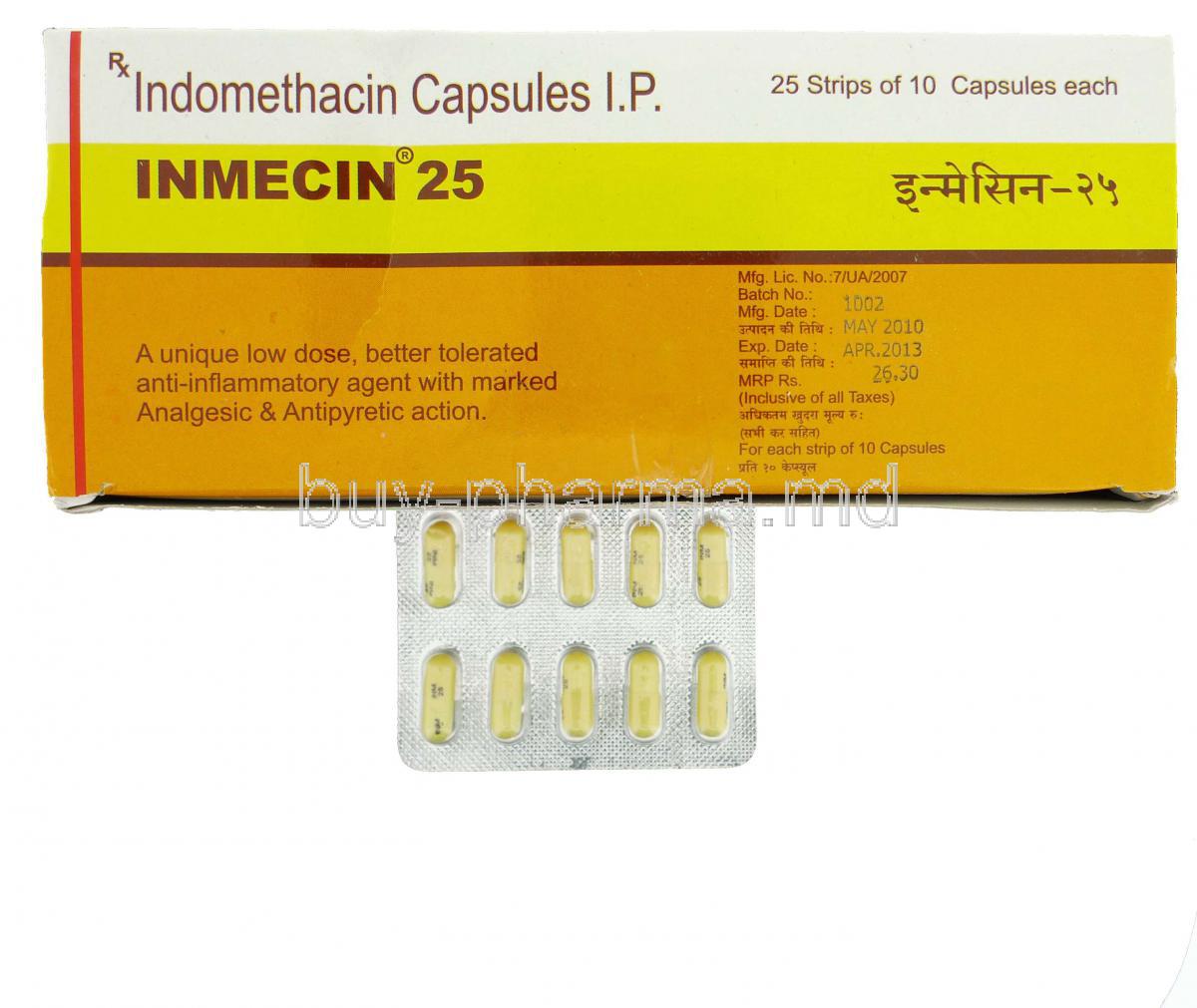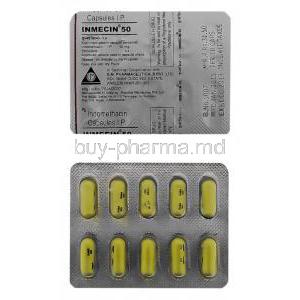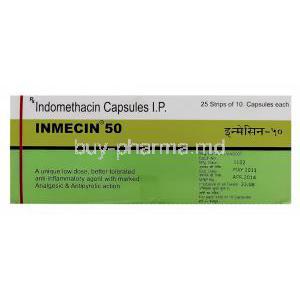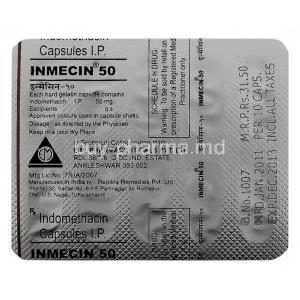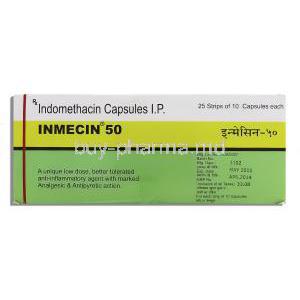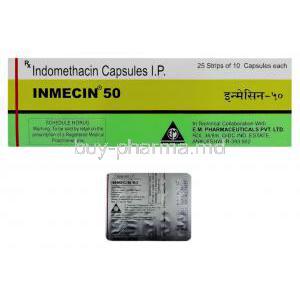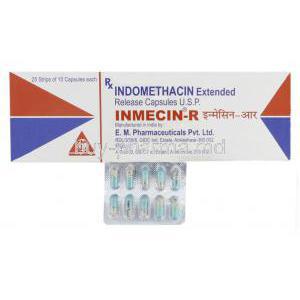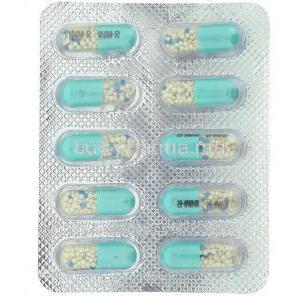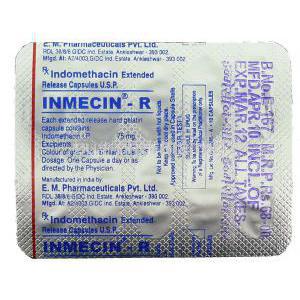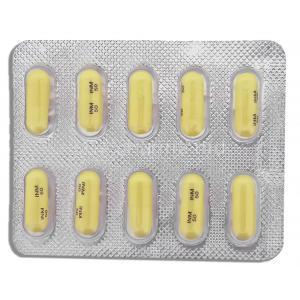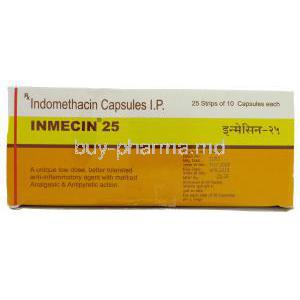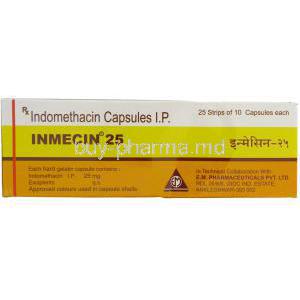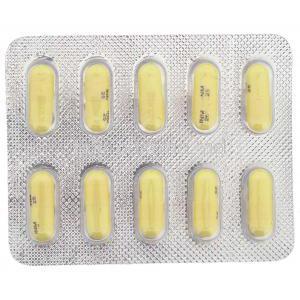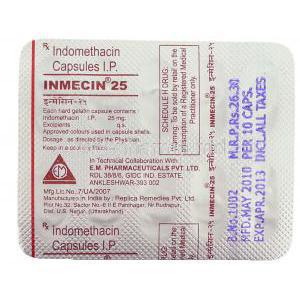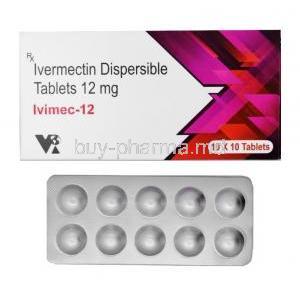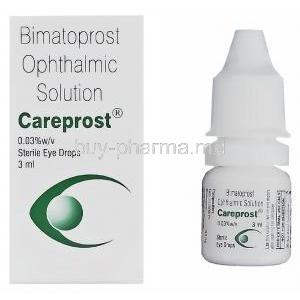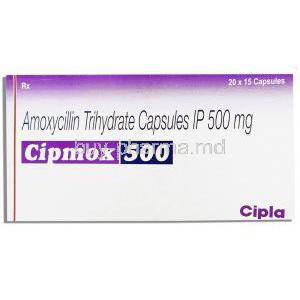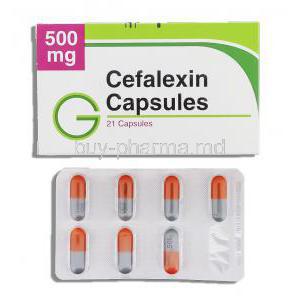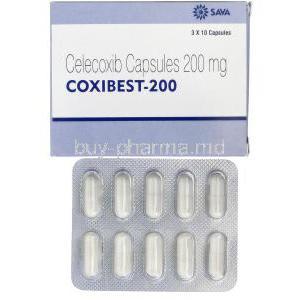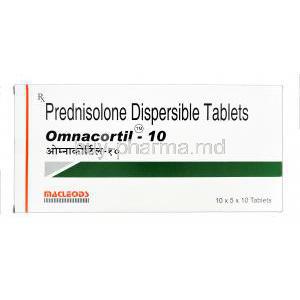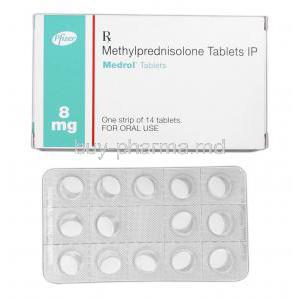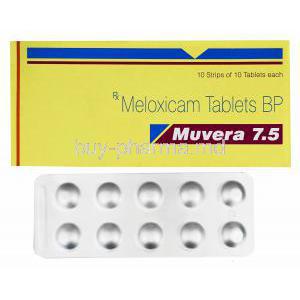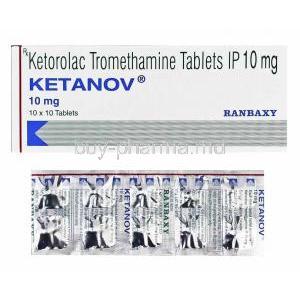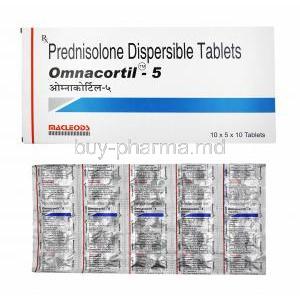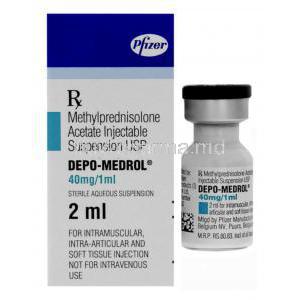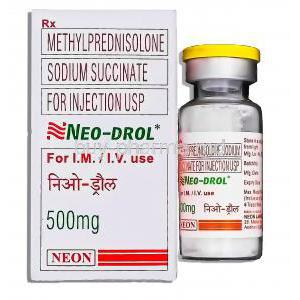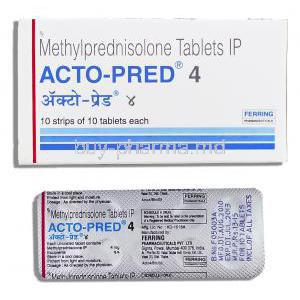Indomethacin
- I. Introduction to Indomethacin
- II. Understanding How Indomethacin Works
- III. Uses of Indomethacin
- IV. Dosage and Administration of Indomethacin
- V. Indomethacin Composition
- VI. Storage Guidelines for Indomethacin
- VII. Interaction of Indomethacin with Other Substances
- VIII. Warnings and Contraindications for Indomethacin Use
- IX. Administering Indomethacin with Care
- X. Specific Guidelines for Indomethacin Administration
- XI. Understanding Overdosage of Indomethacin
- XII. Handling Precautions for Indomethacin
- XIII. Side Effects of Indomethacin
- XIV. Important Precautions When Using Indomethacin
I. Introduction to Indomethacin
A. History and Development of Indomethacin
Indomethacin, created in the 1960s, is a non-steroidal anti-inflammatory medication (NSAID). Since its development, it quickly gained recognition within the community because of its remarkable effectiveness in addressing various inflammatory conditions. The introduction of Indomethacin marked an advancement in pharmacology, providing a better option than the existing anti-inflammatory and pain relief drugs.
B. General Overview of Indomethacin's Clinical Use
Throughout the years, Indomethacin has gained recognition as a versatile therapeutic agent. While its primary use is anti-inflammatory, it can also serve as an analgesic and antipyretic. However, it's essential to exercise caution when using Indomethacin due to its side effects. As a result, doctors usually prescribe this medication when other first-line NSAIDs have failed to produce the desired results.
II. Understanding How Indomethacin Works
A. Mechanism of Action
Indomethacin achieves its effects by blocking the action of cyclooxygenase (COX) enzymes, specifically COX 1 and COX 2. These enzymes produce prostaglandins, hormone-like substances responsible for causing pain, fever, and inflammation. Through inhibiting these enzymes, Indomethacin reduces the generation of prostaglandins leading to relief from the symptoms.
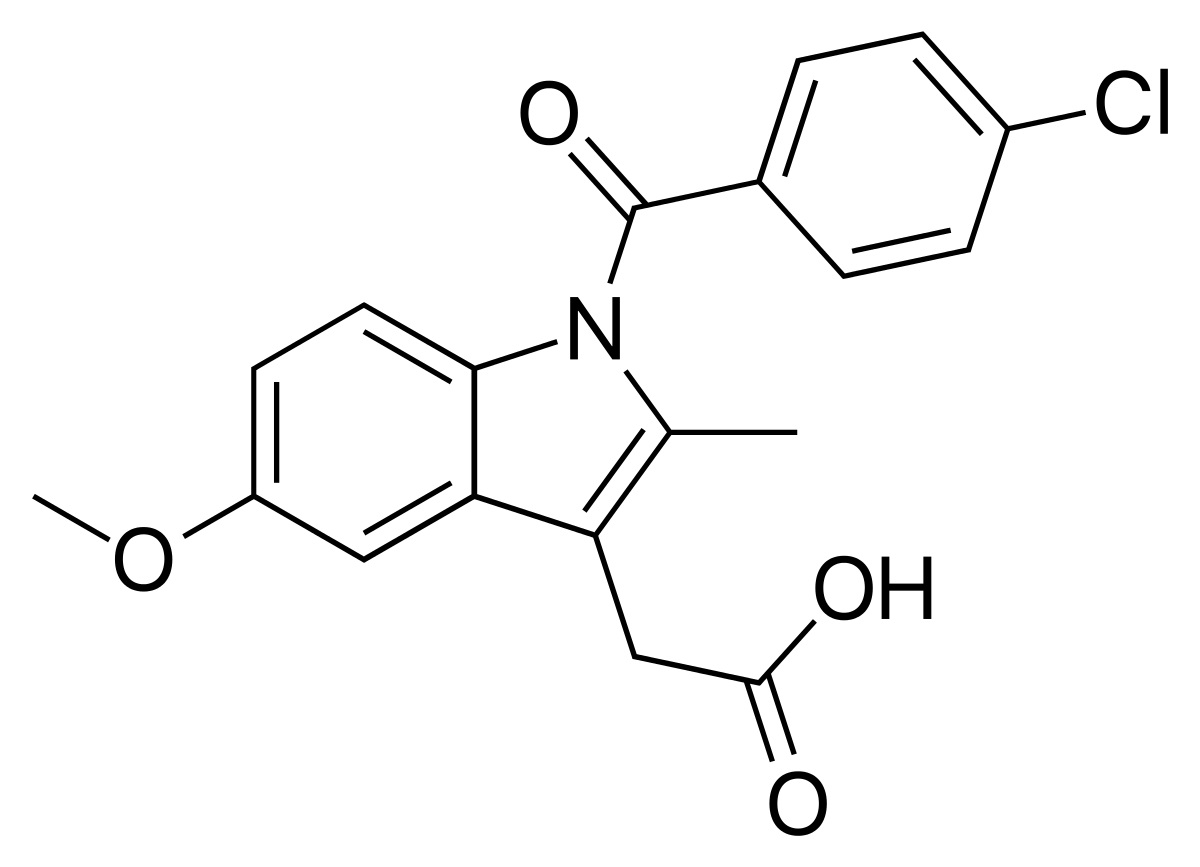
B. Impact on Inflammatory Responses
Indomethacin works by inhibiting the production of prostaglandins, which affects the inflammatory response. It reduces blood vessel dilation decreases the permeability of capillaries, and reduces the sensitivity of pain receptors. As a result, it significantly reduces the signs of inflammation, including
- Pain
- Redness
- Heat
- Swelling
III. Uses of Indomethacin
A. Primary Uses: Gout, Arthritis, and Other Inflammatory Conditions
Indomethacin is commonly prescribed to treat inflammatory disorders. These include:
- Gouty Arthritis: Indomethacin's powerful anti-inflammatory properties effectively manage flares.
- Rheumatoid Arthritis and Osteoarthritis: It significantly eases chronic symptoms leading to an improved quality of life for patients.
- Ankylosing Spondylitis: Indomethacin provides substantial pain relief and reduces stiffness associated with this spinal condition.
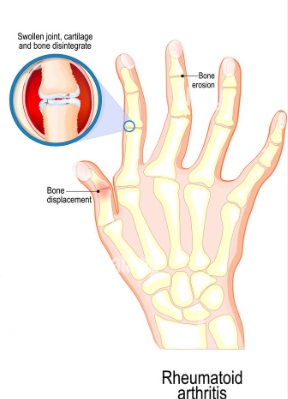

B. Lesser-Known Uses: Other FDA Approved Indications
Besides its uses, Indomethacin has been approved by the FDA for other applications. This includes providing relief from pain and swelling caused by Bursitis and Tendinitis. It is also helpful in closing the heart vessel known as Patent Ductus Arteriosus in newborns.
C. Exploring Off-Label Uses of Indomethacin
Apart from its approved purposes, Indomethacin is also utilized in unapproved situations. These include treating conditions like Bartter syndrome, cluster headaches, and pericarditis. However, using it in cases requires a thorough understanding of the risks and benefits of the drug, as Indomethacin's strong pharmacological properties can lead to potential side effects.
IV. Dosage and Administration of Indomethacin
A. Standard Dosage Guidelines
The dosing of Indomethacin typically varies based on factors such as the patient's condition, age, and how they respond to treatment. However, there are dosage guidelines to follow. The initial recommended dose for adults is between 25 and 50 mg, taken two to three times a day. It's important not to exceed a daily dose of 200 mg.

B. Dosage Modifications for Specific Conditions
Certain medical conditions may require adjustments to the dosage. In the case of gouty arthritis, it is often suggested to start with an initial dose of 50 mg taken three times a day. To ensure a level of medication in the body for conditions like ankylosing spondylitis or rheumatoid arthritis, doctors may prescribe a sustained-release form of Indomethacin.
C. Dosage Adjustments for Specific Populations
Properly adjusting the dosage is essential when it comes to groups of people. For patients, it's important to prescribe the lowest effective dose because they are more likely to experience adverse effects. Regarding children, the dose is typically based on their body weight. It's necessary not to surpass the recommended dosage for adults.
V. Indomethacin Composition
Active Ingredient Analysis: Indomethacin
Indomethacin, derived from acetic acid, is a vital ingredient in the medication. Its distinctive composition enables it to effectively suppress prostaglandins' production, providing relief from inflammation and pain.
B. Overview of Excipients and Their Roles
Indomethacin capsules include not the active ingredient but also additional substances called excipients. These excipients include adding volume to the capsule with fillers, like lactose and cornstarch. Additionally, magnesium stearate is used as a lubricant to prevent clumping of the ingredients. Gelatin and titanium dioxide are employed in the creation of the capsule shell.
VI. Storage Guidelines for Indomethacin
A. Ideal Storage Conditions
Store indomethacin at room temperature, between 20°C to 25°C. Ensure you keep the medication away from light, moisture, and heat. Also, store it in its container and tightly close the lid.
B. Shelf Life and Expiration
The typical shelf life of Indomethacin is three years from the manufacturing date as long as it is stored according to the recommended conditions. Expired medication might lose its effectiveness. In rare cases could be potentially harmful. Hence, it is essential to correctly dispose of any medication that has exceeded its expiration date.
VII. Interaction of Indomethacin with Other Substances
A. Common Drug-Drug Interactions
How Indomethacin interacts with medications can significantly impact how well it works or increase the chances of experiencing unwanted side effects. Some crucial interactions to be aware of
- Antihypertensives and Diuretics: Indomethacin may reduce their effectiveness, affecting blood pressure control.
- Anticoagulants: Using Indomethacin at the time as an anticoagulant may increase the risk of bleeding.
- Lithium and Methotrexate: Indomethacin can potentially raise the levels of these drugs in the bloodstream, making them more toxic.
It's essential to be mindful of these interactions to ensure the effective use of Indomethacin.
B. Interactions with Food, Alcohol, and Herbal Supplements
The absorption of Indomethacin may be influenced by food and beverages.
- Alcohol, for instance, can worsen the side effects of Indomethacin and increase the likelihood of ulcers or bleeding.
- Consuming high-fat meals, on the hand, can slow down the absorption of Indomethacin, resulting in reduced effectiveness.
- It's also important to be cautious when taking supplements, like Ginkgo Biloba alongside Indomethacin, as they could heighten the risk of bleeding.
VIII. Warnings and Contraindications for Indomethacin Use
A. Pre-existing Conditions and Indomethacin
Individuals with existing medical conditions need to be mindful when using Indomethacin. These conditions encompass:
- Gastrointestinal Disorders: Indomethacin may worsen symptoms. Lead to ulcers, bleeding, or perforation.
- Cardiovascular Diseases: Prolonged usage of Indomethacin could heighten the likelihood of events.
- Renal or Hepatic Impairment: Such conditions may impact the way Indomethacin is processed and eliminated by the body, necessitating adjustments to the dosage.
B. Absolute Contraindications for Use
Indomethacin should not be used in the following situations: If you have a known sensitivity or allergy to Indomethacin or any ingredient in the medication. Suppose you have a history of asthma, hives, or allergic reactions after taking aspirin or other nonsteroidal anti-inflammatory drugs (NSAIDs). Treating pain after artery bypass graft (CABG) surgery is not recommended.
IX. Administering Indomethacin with Care
A. Necessary Precautions for Safe Use
When prescribing or using Indomethacin, it is essential to take precautions:
- Regularly monitor your blood pressure if you are using it for a time.
- Periodically assess the functions of your liver and kidneys.
- Always be watchful for any signs of bleeding, particularly in older individuals.
B. Addressing Potential Risks and Side Effects
The chances of experiencing effects become more likely when using higher doses and for more extended periods. Some observed side effects include digestive system issues, such as gastrointestinal disorders, while others are related to the central nervous system, like dizziness and headaches. Additionally, dermatologic reactions may also occur. If any side effects persist or worsen, it is advisable to seek medical attention.

X. Specific Guidelines for Indomethacin Administration
A. Administration to Elderly Patients
To minimize the chances of experiencing effects, older patients should start treatment with the smallest adequate amount. Additionally, observing these individuals for any signs of gastrointestinal bleeding or kidney problems is essential.

B. Administration to Pregnant Women and Nursing Mothers
It is advisable to avoid using Indomethacin during the stages of pregnancy because it could potentially lead to the premature closing of the ductus arteriosus in the fetus. If you are a nursing mother, it's essential to exercise caution, as Indomethacin can be passed through breast milk.

C. Administration to Children
The use of Indomethacin in patients has not been proven safe and effective except for the treatment of patent ductus arteriosus in neonates. Therefore children need to receive supervision when using this medication.

XI. Understanding Overdosage of Indomethacin
A. Symptoms of Overdosage
Overdosing on Indomethacin can have consequences for one's health. Some common symptoms to watch out for include
- Feeling nauseated and experiencing vomiting due to irritation in the stomach.
- Intense headaches, dizziness, or confusion could indicate toxicity in the central nervous system.
- Rare some serious effects might include seizures or even a coma.
B. Recommended Treatment Protocols
If someone takes much Indomethacin, it is crucial to seek immediate medical help. The treatment methods mainly revolve around the steps:
- Performing gastric lavage right away reduces the absorption of the drug.
- Giving activated charcoal to bind the Indomethacin in the system.
- Providing symptomatic and supportive care to address specific symptoms.
XII. Handling Precautions for Indomethacin
A. Safe Handling and Disposal Procedures
To ensure the handling and proper disposal of Indomethacin, it is advisable to take the following steps:
- Use dry hands when handling the medication.
- Do not dispose of the medication in household waste. Pour it down the drain.
- Always adhere to regulations or seek guidance from a pharmacist regarding appropriate disposal methods.
B. Guidelines for Accidental Exposure
If there is an exposure, like a child consuming the medicine or if it spills onto the skin, it is essential to seek medical help right away. Make sure to rinse the skin thoroughly with water.
XIII. Side Effects of Indomethacin
A. Commonly Reported Side Effects
Although Indomethacin is usually well tolerated, there are some experienced side effects, including
- Gastrointestinal issues, like feeling sick, throwing up, or experiencing stomach discomfort.
- Headaches and dizziness.
- Rash or itching sensation.

B. Less Common but Serious Side Effects
Although they are not as common, there can be some side effects that would require medical attention. These may include
- Signs of bleeding, such as stools that are black or contain blood.
- Symptoms related to liver diseases like the yellowing of the eyes or skin.
- Unexplained weight gain or swelling in the hands and feet.
C. Managing Side Effects of Indomethacin
If you experience any side effects, the management strategies may include: Adjusting the dosage or temporarily stopping the medication. Providing care, like ensuring you stay hydrated if you feel nauseous or vomit. Considering switching to medication if the side effects continue or become worse.
XIV. Important Precautions When Using Indomethacin
A. Regular Monitoring and Follow-up
It is essential for individuals taking Indomethacin to schedule checkups to assess how they are responding to the treatment and to check for any possible side effects.
B. Awareness of Potential Allergic Reactions
It is essential to inform patients about the indications of a response to Indomethacin. These indications might consist of
- Hives
- Trouble with breathing
- Swelling of the face, lips, tongue, or throat.
If any of these symptoms appear, it is crucial to seek medical assistance.
C. Precautions for Long-Term Use
For individuals taking Indomethacin for some time, it is essential to monitor liver and kidney function through tests regularly. Additionally, it is crucial to inform patients about the signs of gastrointestinal bleeding. It would be wise to explore treatment options or additional therapies to minimize the need for high doses and prolonged use of Indomethacin.

